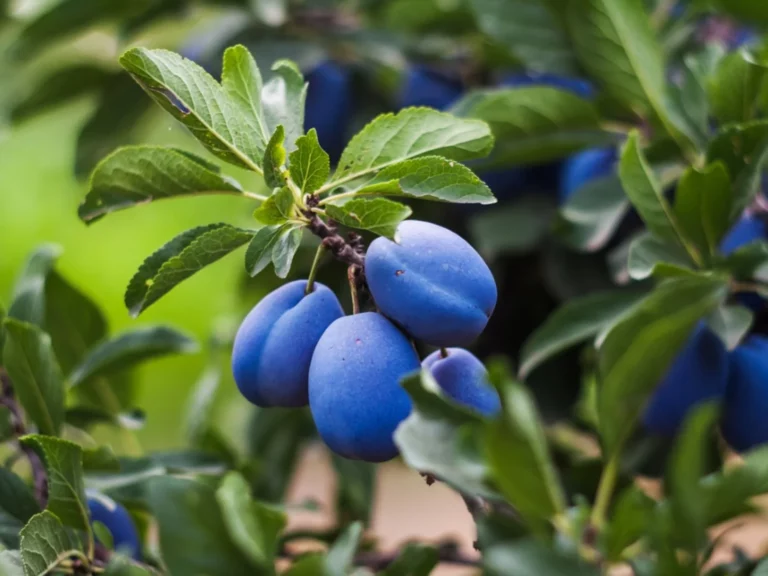Known for its delightful name, this captivating fruit-bearing tree is scientifically classified as Prunus domestica. Originating in the heart of Europe, this tree has been cherished for centuries for its bountiful harvests and ornamental beauty. With its slender branches adorned in lush green foliage and delicate white blossoms, the European Plum tree truly captures the essence of nature’s elegance. While caring for these majestic trees requires some attention, their hardy nature and adaptability make them a suitable choice for both novice and seasoned gardeners alike.
Other common plum tree varieties:
- Ozark Premier Plum
- Methley Plum
- Shiro Plum
- Wild Native American Plum
- Toka Plum
Care
Thankfully, Plum trees – similarly to Tomatoes or Pumpkins -, are pretty easy to care for, but of course, there are some things you should keep in mind and pay attention to:
- Soil: they grow best in well-draining soil with pH levels between 6.0 and 6.5. They like moisture, but as many other plants, do not want to be waterlogged.
- Light: Plum trees love full sun, so make sure they get at least 6 hours of direct sunlight every day.
- Water: these trees need a good soaking every month. So if the weather does not provide enough rain, you need to water them.
- Temperature: They can withstand cold winters, but they prefer temps above 55F
Propagation
The most common methods of propagating European Plum trees include budding and grafting. Budding involves grafting a bud from the desired plum variety onto a rootstock, while grafting involves joining a scion (desired variety) with a rootstock. Both techniques require careful alignment and proper sealing to ensure a successful union. Additionally, European Plum trees can also be propagated from cuttings, although this method is less commonly used and often requires the application of rooting hormones for better success rates.
Pruning
Pruning plum trees don’t require the same precision as apples and pears, but it’s still important for their optimal fruit production. Initial training and thinning of old wood can significantly boost their fruit yield.
To avoid silver leaf disease, prune plums in early spring or mid-summer, steering clear of winter pruning.
When it comes to the timing of plum pruning, avoid winter as it increases the risk of silver leaf disease in plums and other Prunus species. Young plum trees are best pruned in spring, while established ones are typically pruned in mid-summer.
There are three common methods for pruning plums: bush, pyramid, and fan. Additionally, training plums as cordons is becoming increasingly popular.
Common Pests
Frequently Asked Questions
European Plum trees exhibit partial self-fertility, resulting in some fruit production when grown alone, though planting another plum tree in close proximity will enhance their fruit yield.
Where do plum trees grow best?
Plum trees thrive best in regions with temperate climates, where they can experience a distinct winter dormant period and a warm growing season. They prefer locations with full sun exposure, well-drained soil, and protection from strong winds.
Can a European plum pollinate a Japanese plum?
No, Japanese and European plum trees can’t pollinate each other.
What are the common pests and diseases that affect European Plum trees, and how can they be prevented or treated?
Common pests and diseases that affect European Plum trees include plum curculio, black knot fungus, and brown rot, which can be prevented or treated with proper sanitation, regular inspections, and targeted pesticide applications.


